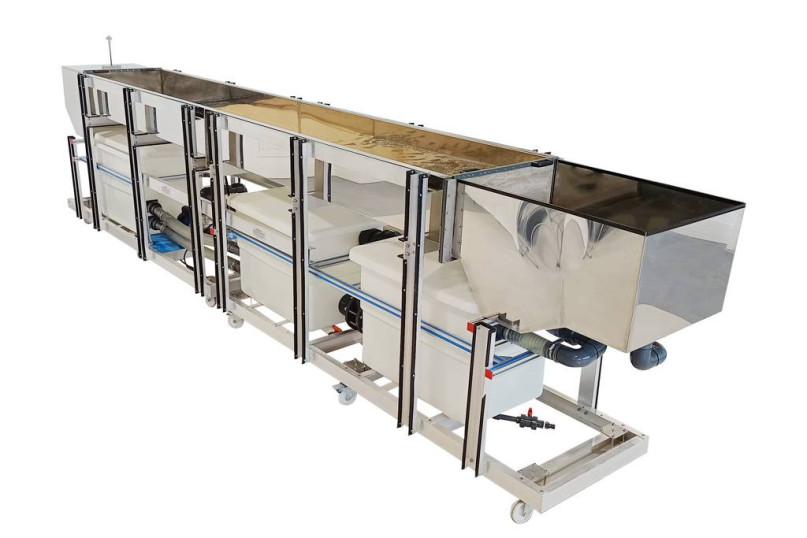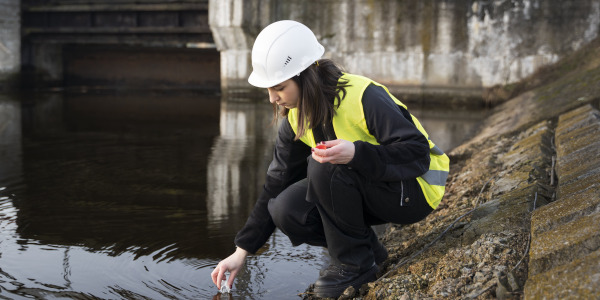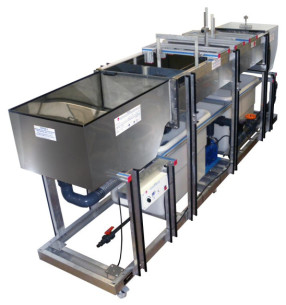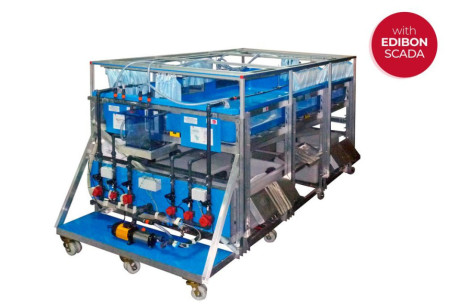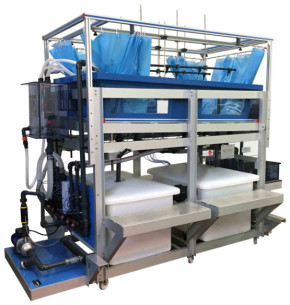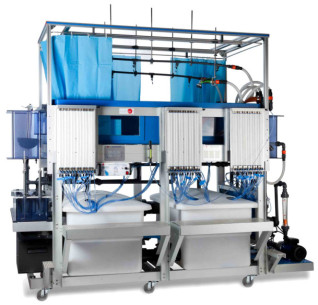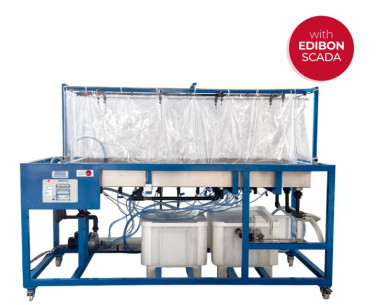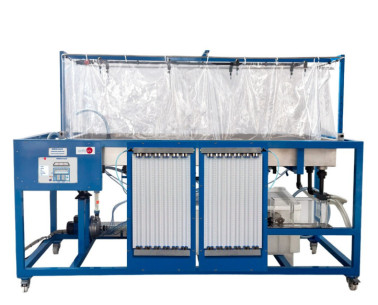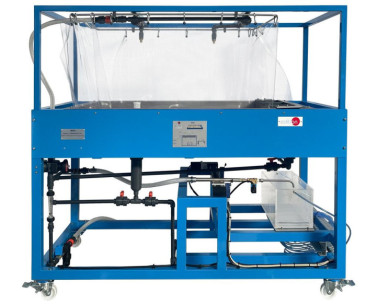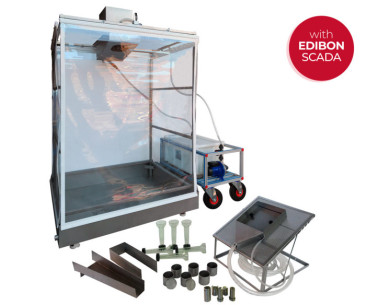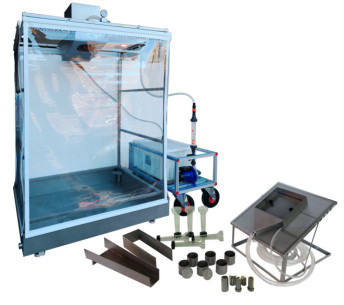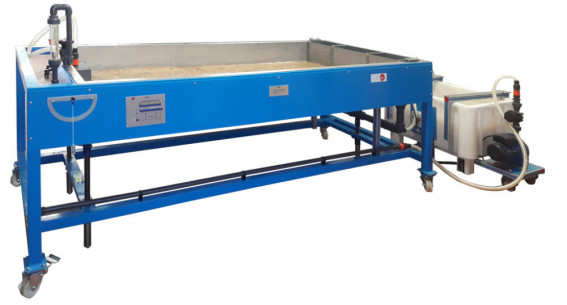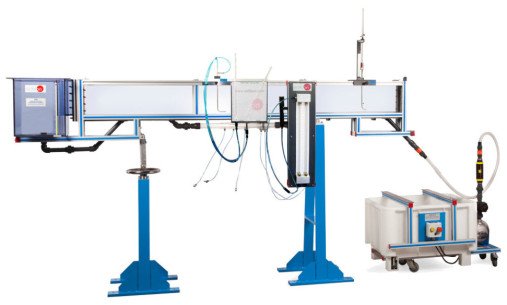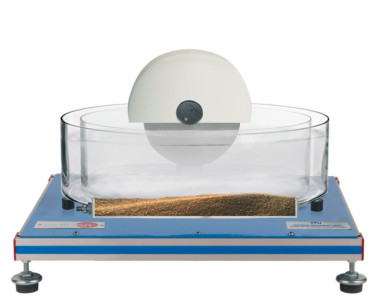HVFLM-4 Unité de Visualisation de Lit et d'Écoulement Mobile (section de travail : 4000X610 mm)
SYSTEMES INNOVANTS
L'Unité de Visualisation de Lit et d'Écoulement Mobile (section de travail : 4000 x 610 mm), "HVFLM-4", est un unité particulièrement utile pour démontrer le phénomène de fluidisation en ingénierie.
Laboratories
NOUVELLES LIÉES
Description Générale
L'Unité de Visualisation de Lit et d'Écoulement Mobile (section de travail : 4000 x 610 mm), "HVFLM-4", peut être utilisée principalement dans deux domaines d'étude. Le premier est l'étude des lits mobiles, qui sont liés aux cours d'eau et aux structures de génie civil. Le second est lié à la visualisation de l'écoulement en deux dimensions.
L'unité "HVFLM-4" consiste en un canal horizontal à travers lequel un courant d'eau s'écoule lentement et à une profondeur constante. Ce canal permet de visualiser l'écoulement et le lit mobile en deux dimensions car il possède une grande surface de travail (section : 4000 mm x 610 mmm). La partie supérieure de cette surface peut être entièrement visualisée pendant les exercices pratiques, sans qu'il soit nécessaire d'assembler un quelconque accessoire.
La position de différents modèles et structures dans le canal, où l'écoulement circule autour d'eux, permet d'effectuer des études de lit mobile et de visualisation de l'écoulement de manière simple.
L'unité est autonome et se compose d'un réservoir d'entrée avec un déversoir réglable, d'un canal avec des pièges à sable, d'un réservoir de décharge, de réservoirs de stockage de l'eau, d'une pompe centrifuge, et d'une pompe à eau, un débitmètre électromagnétique et un ensemble de modèles. L'unité comprend l'instrumentation nécessaire pour mesurer le niveau de l'eau et la profondeur du lit, formée par un porte-instruments et une jauge.
Les exercices pratiques avec cette unité sont réalisés en utilisant de l'eau et du sable.
Des exercices et pratiques guidées
EXERCICES GUIDÉS INCLUS DANS LE MANUEL
- Observation de l'écoulement autour de maquettes d'ouvrages d'art.
- Expériences en lit mobile.
- Etude des caractéristiques des méandres des cours d'eau.
- Visualisation du comportement des couches limites.
- Démonstration de la succion de la couche limite.
- Études de l'érosion.
- Études de la déposition.
- Études de la distribution de la vitesse dans un écoulement en canal.
- Études sur les ouvrages d'art.
- Visualisation de l'écoulement en deux dimensions.
- Etude de l'analogie hydraulique avec les écoulements compressibles.
UNITÉS SIMILAIRES DISPONIBLES
EQUIPEMENT COMPLEMENTAIRE
Unité de Systèmes Hydrologiques, Simulateur de Pluie et Systèmes d´Irrigation (4x2 m), Contrôlée par Ordinateur (PC)
Unité de Systèmes Hydrologiques, Simulateur de Pluie et Systèmes d´Irrigation (2x1m), Contrôlée par Ordinateur (PC)
Unité de Systèmes Hydrologiques, Simulateur de Pluie et Systèmes d´Irrigation (2x1m)
Unité d'Études Hydrologiques Contrôlées par Ordinateur
Unité d'Études Hydrologiques
Unité de l'hydrologie des Précipitations
Simulateur de Pluie pour l'Étude de l'Érosion des Sols, Contrôlé par Ordinateur (PC)
Simulateur de Pluie pour l'Étude de l'Érosion des Sols
Simulateur d´Écoulement d´un Fleuve
Unité de Visualisation de Flux et de Lit Mobile (section de travail : 2000X610 mm)
Canal Ouvert de Sédimentation
Unité de Transport de Sédiments
Qualité

Service après vente

 Préférences sur les cookies
Préférences sur les cookies

